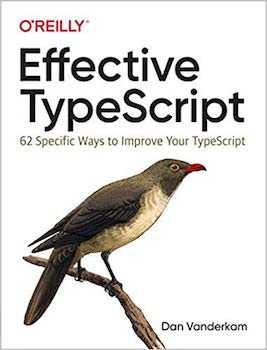Maybe it’s just my experience, but I used to think of TypeScript as the programming language without a fanbase. Too formal for the JavaScript crowd, with all those types getting in the way. Yet too lax for the Java folks, used to structure and order.
I didn’t spend much time learning the language when I started using it. I remember my confusion when I discovered that due to structural typing, you can assign the same object to two classes with the same shape. What the hell is that?
Then at some point, I read Effective TypeScript. After that, I felt like when I discovered as a kid that scissors are way easier to use with your right hand (I’m left-handed). I wasn’t stupid after all. I was just misusing the tool!
Should you read it?
Yes! Fittingly, it follows a similar structure to Effective Java (the best book about a programming language, IMO). It’s not a book to learn TypeScript. It is a book about learning how to use TypeScript effectively.
There are 62 items across its roughly 240 pages. Each item offers actionable advice on how to write better TypeScript code, providing examples and explaining some of the misunderstood or little known features that TypeScript throws at you.
Given that TypeScript is mostly about enhancing JavaScript with types, this book is mostly about using types to make your code more self-descriptive and catch errors. If you have come in contact with one of these awful codebases where people gave up in the middle and littered the code with any annotations, you’ll understand exactly what I mean.
Just as an appetizer, let’s have a look at some actual items.
Item 37: Consider brands for nominal typing
Structural typing can lead to unexpected results. This object:
{
id: 3
}
can be assigned to this two classes.
class UserId {
id: string
}
class VehicleId {
id: string
}
While technically correct, you probably didn’t mean this! In a project, we had a production bug because of this. So what do you do? Well, you brand your classes:
class UserId {
_brand: 'user-id'
id: string
}
Item 28: Prefer types that always represent valid states
Union types are a way of dealing with objects being possibly in different states. Let’s say you are loading a user, and you have to wait for it to load before accessing any property. You can use a ton of optional fields, or you can use a tagged union:
interface LoadingUser {
type: 'loading';
}
interface LoadedUser {
type: 'user';
firstName: string;
}
type User = LoadingUser | LoadedUser;
Thanks to type narrowing (Item 22), your code will be a lot tighter and typesafe this way. Once you get used to this style, you’ll notice that many libraries don’t follow this pattern, making things a lot more brittle than they should be.
Verdict
Compact, informative, even eye-opening. Effective TypeScript is a clear ⭐⭐⭐⭐⭐. Now that both Angular and React seem to use TypeScript as their default, you can’t afford to miss this one.



Top comments (0)